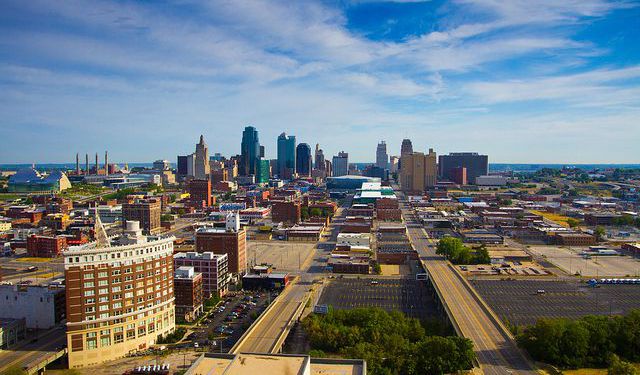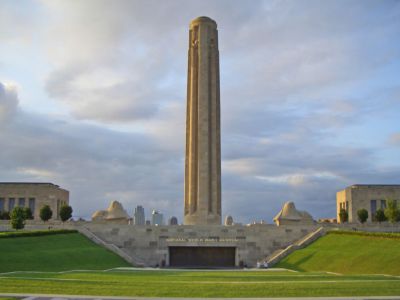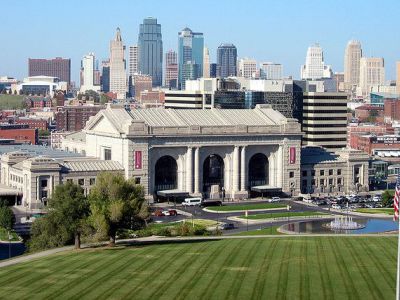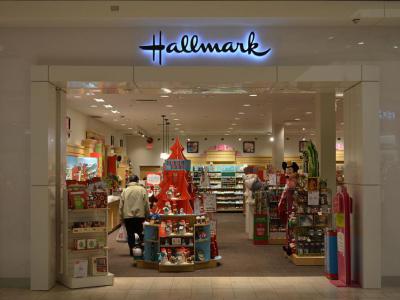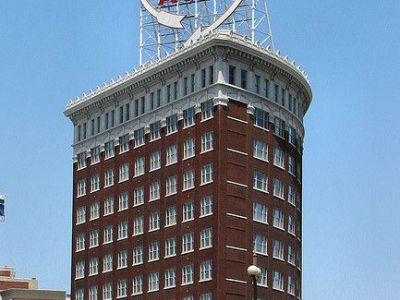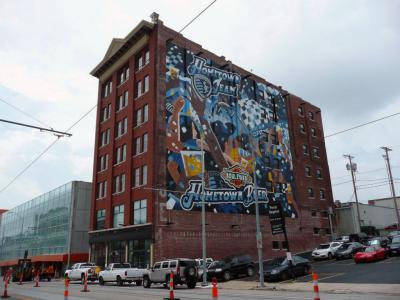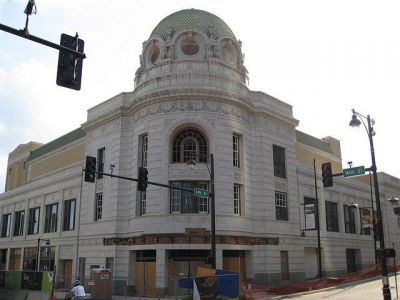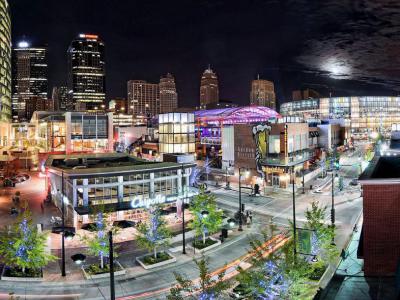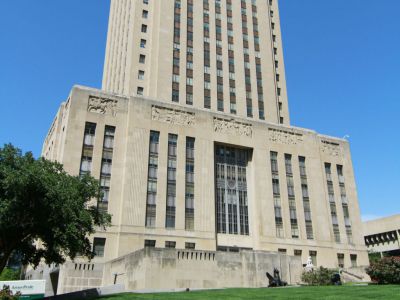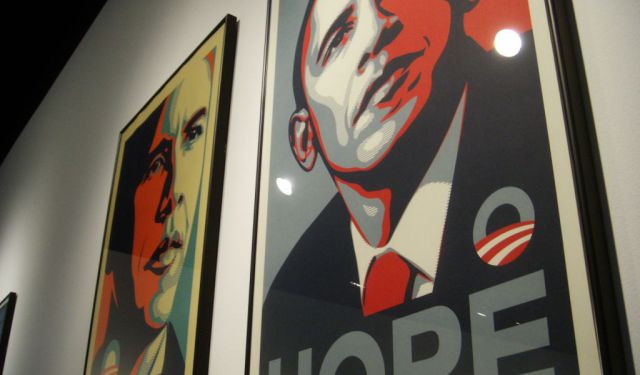Kansas City Introduction Walking Tour (Self Guided), Kansas City
Kansas City, Missouri, started in the 1830s as a port city at the confluence of the Missouri and Kansas Rivers. The first European explorers to map the area were the French, who named the river “Cansez,” which eventually morphed into Kansas.
Louis and Clark passed through in 1804, noting that the area was an excellent place to build a fort. The actual settlement didn’t come until later, when a group of investors built a landing for river traffic in the area. The town was incorporated in 1850, and it was booming thanks to the increased westward exploration and settling of America. The area saw action during the Civil War as the Confederacy tried unsuccessfully to take the city. After the war, railroads brought even more settlers and traffic. The city’s Union Station still stands, but it’s now used as a museum and history center more than a train stop.
The city was dominated by political bosses in the early 20th century, including the notorious Tom Pendergast. Many notable landmark buildings were constructed during this time, including City Hall and the Power & Light Building.
Kansas City has gone to great lengths to preserve its history, and many historic buildings and structures have been revitalized and repurposed as condominiums or attractions. Having been built in the glory days of the 1920s, many of these structures have Art Deco touches that never go out of style. Don’t miss the Power & Light District, where stops like the Midland and Mainstreet Theaters continue to draw crowds. The district is booming with entertainment and dining options, and it’s well worth the stop.
Kansas City has a unique mix of historic and modern building styles, and a vibrant arts and entertainment scene. Come enjoy a walking tour of the most notable attractions in the city, learn about the history of the area, and enjoy the beauty that is life in modern-day Kansas City!
Louis and Clark passed through in 1804, noting that the area was an excellent place to build a fort. The actual settlement didn’t come until later, when a group of investors built a landing for river traffic in the area. The town was incorporated in 1850, and it was booming thanks to the increased westward exploration and settling of America. The area saw action during the Civil War as the Confederacy tried unsuccessfully to take the city. After the war, railroads brought even more settlers and traffic. The city’s Union Station still stands, but it’s now used as a museum and history center more than a train stop.
The city was dominated by political bosses in the early 20th century, including the notorious Tom Pendergast. Many notable landmark buildings were constructed during this time, including City Hall and the Power & Light Building.
Kansas City has gone to great lengths to preserve its history, and many historic buildings and structures have been revitalized and repurposed as condominiums or attractions. Having been built in the glory days of the 1920s, many of these structures have Art Deco touches that never go out of style. Don’t miss the Power & Light District, where stops like the Midland and Mainstreet Theaters continue to draw crowds. The district is booming with entertainment and dining options, and it’s well worth the stop.
Kansas City has a unique mix of historic and modern building styles, and a vibrant arts and entertainment scene. Come enjoy a walking tour of the most notable attractions in the city, learn about the history of the area, and enjoy the beauty that is life in modern-day Kansas City!
How it works: Download the app "GPSmyCity: Walks in 1K+ Cities" from Apple App Store or Google Play Store to your mobile phone or tablet. The app turns your mobile device into a personal tour guide and its built-in GPS navigation functions guide you from one tour stop to next. The app works offline, so no data plan is needed when traveling abroad.
Kansas City Introduction Walking Tour Map
Guide Name: Kansas City Introduction Walking Tour
Guide Location: USA » Kansas City (See other walking tours in Kansas City)
Guide Type: Self-guided Walking Tour (Sightseeing)
# of Attractions: 8
Tour Duration: 2 Hour(s)
Travel Distance: 3.7 Km or 2.3 Miles
Author: DanaOffice
Sight(s) Featured in This Guide:
Guide Location: USA » Kansas City (See other walking tours in Kansas City)
Guide Type: Self-guided Walking Tour (Sightseeing)
# of Attractions: 8
Tour Duration: 2 Hour(s)
Travel Distance: 3.7 Km or 2.3 Miles
Author: DanaOffice
Sight(s) Featured in This Guide:
- National WWI Museum and Memorial
- Union Station
- Hallmark Visitors Center
- Coca-Cola Building
- The Globe Building
- Mainstreet Theater
- Power & Light District
- Kansas City City Hall
1) National WWI Museum and Memorial (must see)
The ground was broken for the Kansas City WWI Memorial in 1921. Witnessed by more than 100,000 people, the ceremony was performed by the supreme Allied commanders. It was the first time that these five people had ever come together in the same place. The monument was dedicated in 1926 by President Calvin Coolidge. Congress officially named it the nation's WWI monument in 2004, at which time the grounds were expanded to build the Edward Jones Research Center. But as far back as opening day, President Coolidge had referred to it as the national monument to the Great War.
The central feature of the museum grounds is the National World War I Monument, the 265-foot tall Liberty Tower. Lighting effects make the top of the tower look like a flame is burning at night. The view from the tower's top of Union Station and downtown Kansas City is worth the trip alone. The museum grounds surround the tower, with two exhibit halls and two unseeing Sphinxes. The buildings and monuments are designed in the Eqyptian Revival method.
Why is the national WWI monument and museum located in Kansas City? Kansas City was experiencing a massive boom at the time the war broke out. It was that year, in 1914, that the city opened its new Union Station. During the war, grains and corn grown in the area were shipped overseas, and thousands of troops passed through Union Station on their way to deployments. The city felt deeply connected to the war effort, and when the armistice was signed in 1918, a huge victory parade filled the city's streets. Within weeks, city leaders and philanthropists had begun fundraising for the memorial.
Why You Should Visit:
- Two galleries highlight WWI–one focuses on the war before the US entered, and the other focuses on the US's military and peacemaking efforts.
- The museum hosts many exhibits and memorabilia from the period, including a Model T ambulance and replica trenches. They have the world's most comprehensive collection of WWI artifacts.
- The museum and monument are dedicated to the soldiers who served in the war. Upon entry, you pass a field of 9,000 red poppies-each poppy represents 1,000 soldiers' deaths.
Tips:
- Check out the museum's website for information on rotating exhibits, special events, and film screenings.
- The panoramic views from the top of the Liberty Monument are breath-taking. Take the time to appreciate the iconic buildings that make up Kansas City's skyline, including City Hall, Union Station, and the Power and Light Building.
- Don't miss grabbing lunch in the Over There Café, where you can eat like a soldier, with decor that features flags and music from the time.
The central feature of the museum grounds is the National World War I Monument, the 265-foot tall Liberty Tower. Lighting effects make the top of the tower look like a flame is burning at night. The view from the tower's top of Union Station and downtown Kansas City is worth the trip alone. The museum grounds surround the tower, with two exhibit halls and two unseeing Sphinxes. The buildings and monuments are designed in the Eqyptian Revival method.
Why is the national WWI monument and museum located in Kansas City? Kansas City was experiencing a massive boom at the time the war broke out. It was that year, in 1914, that the city opened its new Union Station. During the war, grains and corn grown in the area were shipped overseas, and thousands of troops passed through Union Station on their way to deployments. The city felt deeply connected to the war effort, and when the armistice was signed in 1918, a huge victory parade filled the city's streets. Within weeks, city leaders and philanthropists had begun fundraising for the memorial.
Why You Should Visit:
- Two galleries highlight WWI–one focuses on the war before the US entered, and the other focuses on the US's military and peacemaking efforts.
- The museum hosts many exhibits and memorabilia from the period, including a Model T ambulance and replica trenches. They have the world's most comprehensive collection of WWI artifacts.
- The museum and monument are dedicated to the soldiers who served in the war. Upon entry, you pass a field of 9,000 red poppies-each poppy represents 1,000 soldiers' deaths.
Tips:
- Check out the museum's website for information on rotating exhibits, special events, and film screenings.
- The panoramic views from the top of the Liberty Monument are breath-taking. Take the time to appreciate the iconic buildings that make up Kansas City's skyline, including City Hall, Union Station, and the Power and Light Building.
- Don't miss grabbing lunch in the Over There Café, where you can eat like a soldier, with decor that features flags and music from the time.
2) Union Station (must see)
Kansas City's Union Station is a historic station that opened in 1914, serving as a key transportation hub for the city and the surrounding metropolitan area. It replaced the smaller Union Depot from 1878, known for its distinctive blend of Second Empire and Gothic Revival architectural styles, designed by Asa Beebe Cross. By the early 20th century, the original depot struggled with overcrowding and flood risks, prompting the Kansas City Terminal Railway to commission a grand new station at 25th Street and Grand Avenue.
Designed by architect Jarvis Hunt in the Beaux-Arts style, Union Station covered 850,000 square feet, featuring a 95-foot-high Grand Hall, three massive chandeliers weighing 3,500 pounds each, and a prominent 6-foot clock face. When it opened on October 30, 1914, it was the third-largest train station in the United States, reflecting Kansas City's significance as a rail hub. During its peak in 1945, Union Station handled over 670,000 passengers annually, but usage declined rapidly in the 1950s, leading to its closure in 1985.
A transformative restoration effort began in 1996. This project revitalized the station, which reopened in 1999 as a cultural and entertainment complex featuring museums, theaters, and various attractions. By 2002, train service resumed when Amtrak began operations, making Union Station Missouri's second-busiest train station.
The station hosts attractions like Science City, the H&R Block City Stage Theater, the Regnier Extreme Screen, and the Gottlieb Planetarium, plus various restaurants, shops, and exhibits. Key tenants include the Irish Museum and Cultural Center (since 2007) and the Todd Bolender Center for Dance and Creativity (since 2011). Since 2016, it has also been a KC Streetcar stop, making it a vibrant, multi-use destination.
Why You Should Visit:
Science City is an interactive science city with hands-on exhibits for all ages.
Other on-site attractions include the Regnier Extreme Screen, the largest 3D theater in the area at five and a half stories tall. There's also the H&R Block City Stage Theatre for live shows and the Todd Bolender Center for Dance and Creativity, home to the Kansas City Ballet.
Various museum exhibitions are shown from time to time, and the region's largest planetarium is found here. There are also historical exhibits about the golden age of train travel and a model train exhibit.
Tips:
- There's a lot to see and do here; make sure to check out the venue's website for current theater and movie screenings and times.
- Don't miss traveling exhibitions that occasionally pass through town.
Designed by architect Jarvis Hunt in the Beaux-Arts style, Union Station covered 850,000 square feet, featuring a 95-foot-high Grand Hall, three massive chandeliers weighing 3,500 pounds each, and a prominent 6-foot clock face. When it opened on October 30, 1914, it was the third-largest train station in the United States, reflecting Kansas City's significance as a rail hub. During its peak in 1945, Union Station handled over 670,000 passengers annually, but usage declined rapidly in the 1950s, leading to its closure in 1985.
A transformative restoration effort began in 1996. This project revitalized the station, which reopened in 1999 as a cultural and entertainment complex featuring museums, theaters, and various attractions. By 2002, train service resumed when Amtrak began operations, making Union Station Missouri's second-busiest train station.
The station hosts attractions like Science City, the H&R Block City Stage Theater, the Regnier Extreme Screen, and the Gottlieb Planetarium, plus various restaurants, shops, and exhibits. Key tenants include the Irish Museum and Cultural Center (since 2007) and the Todd Bolender Center for Dance and Creativity (since 2011). Since 2016, it has also been a KC Streetcar stop, making it a vibrant, multi-use destination.
Why You Should Visit:
Science City is an interactive science city with hands-on exhibits for all ages.
Other on-site attractions include the Regnier Extreme Screen, the largest 3D theater in the area at five and a half stories tall. There's also the H&R Block City Stage Theatre for live shows and the Todd Bolender Center for Dance and Creativity, home to the Kansas City Ballet.
Various museum exhibitions are shown from time to time, and the region's largest planetarium is found here. There are also historical exhibits about the golden age of train travel and a model train exhibit.
Tips:
- There's a lot to see and do here; make sure to check out the venue's website for current theater and movie screenings and times.
- Don't miss traveling exhibitions that occasionally pass through town.
3) Hallmark Visitors Center (must see)
The Hallmark Visitors Center in Kansas City is a captivating tribute to the legacy of J.C. Hall, a determined teenager from Nebraska who, in 1910, arrived in Kansas City with two shoeboxes of postcards and a dream. Over a century later, Hallmark has grown into a billion-dollar enterprise known for its diverse portfolio of innovative businesses and one of the world's largest creative communities, all driven by a commitment to enrich lives and foster emotional connections.
Located in the vibrant Crown Center, the Visitors Center offers an immersive experience for guests interested in history, craftsmanship, and the evolution of a brand synonymous with heartfelt communication. Visitors can explore interactive exhibits that trace Hallmark’s journey from its humble beginnings to its status as an iconic global brand. Highlights include a nostalgic look at Hallmark's famed keepsake holiday ornaments and a unique display of custom-built Christmas trees made by employees for J.C. Hall each year, offering a glimpse into the personal traditions that have shaped the company's culture.
The Hallmark Visitors Center not only celebrates the company's past but also reflects its ongoing commitment to community involvement, sustainability, and diversity. Through exhibits that showcase Hallmark's famous collaborations and current products, visitors can see firsthand how the company continues to inspire meaningful relationships and enhance lives worldwide. Whether you're a history buff, a lover of fine artifacts, or simply curious about the art of card-making, the Hallmark Visitors Center provides a unique opportunity to connect with one of Kansas City's most enduring and creative enterprises.
Why You Should Visit:
Watch a bow machine make the perfect souvenir bow right before your eyes. Barbie fans will love taking selfies with a life-sized Barbie doll. Families can take part in an artifact search. Hallmark fans will appreciate the inside look at what makes this company special: connecting with your loved ones.
Crown Center has many other family-friendly attractions, like the Coterie Theater, the Ice Terrace, the Legoland Discovery Center, the Kaleidoscope, and the Sea Life Aquarium.
Tips:
Check to see if their Hallmark Live programs are running. These are talks given by the company's most creative and talented individuals.
This is a free museum that has self-guided exhibits. It's the perfect stop if you want a quick look or if you want to spend all day there. Pace it however you like. Guided tours are available for groups of 15 or more.
Located in the vibrant Crown Center, the Visitors Center offers an immersive experience for guests interested in history, craftsmanship, and the evolution of a brand synonymous with heartfelt communication. Visitors can explore interactive exhibits that trace Hallmark’s journey from its humble beginnings to its status as an iconic global brand. Highlights include a nostalgic look at Hallmark's famed keepsake holiday ornaments and a unique display of custom-built Christmas trees made by employees for J.C. Hall each year, offering a glimpse into the personal traditions that have shaped the company's culture.
The Hallmark Visitors Center not only celebrates the company's past but also reflects its ongoing commitment to community involvement, sustainability, and diversity. Through exhibits that showcase Hallmark's famous collaborations and current products, visitors can see firsthand how the company continues to inspire meaningful relationships and enhance lives worldwide. Whether you're a history buff, a lover of fine artifacts, or simply curious about the art of card-making, the Hallmark Visitors Center provides a unique opportunity to connect with one of Kansas City's most enduring and creative enterprises.
Why You Should Visit:
Watch a bow machine make the perfect souvenir bow right before your eyes. Barbie fans will love taking selfies with a life-sized Barbie doll. Families can take part in an artifact search. Hallmark fans will appreciate the inside look at what makes this company special: connecting with your loved ones.
Crown Center has many other family-friendly attractions, like the Coterie Theater, the Ice Terrace, the Legoland Discovery Center, the Kaleidoscope, and the Sea Life Aquarium.
Tips:
Check to see if their Hallmark Live programs are running. These are talks given by the company's most creative and talented individuals.
This is a free museum that has self-guided exhibits. It's the perfect stop if you want a quick look or if you want to spend all day there. Pace it however you like. Guided tours are available for groups of 15 or more.
4) Coca-Cola Building
While this building was built in 1914 for The Coca-Cola Company, most know it by its later association with Western Auto. That might have something to do with the enormous multi-story lighted sign on the top. That sign still stands today, making the building a city landmark visible throughout the Crossroads neighborhood and from I-35.
Starting as early as 1909, Coca-Cola planned the building due to its proximity to the up-and-coming Union Station and downtown business district. It was to be their headquarters for distribution throughout the west-central US. The building was drawn up by Coca-Cola's chief architect, Arthur Tufts, who had to deal with the lot's constraints due to different elevations and the bordering railroad tracks. The building has a unique shape designed to maximize the use of the triangular piece of land once it sits. A large Coca-Cola sign graced the building's top until 1928. Western Auto, a catalog auto parts distributor, progressively occupied more and more space in the building until it purchased it in 1952. They spent over $300,000 in renovations on the building and installed the iconic 70-by-73-foot sign that weighs more than 30 tons.
Western Auto was eventually purchased by Sears-Robuck and then Advanced Auto Parts, and the building was sold off. The sign remained, and a forward-thinking real estate development purchased the building and kept the sign, embracing the name. Today, the building and a few other surrounding buildings have been converted into condominiums as part of the Western Auto Lofts. In 2018, after a major upgrade project to get the old sign ready for the modern world, the sign was switched back on with energy-efficient LEDs replacing the original neon tubes and incandescent lightbulbs.
Starting as early as 1909, Coca-Cola planned the building due to its proximity to the up-and-coming Union Station and downtown business district. It was to be their headquarters for distribution throughout the west-central US. The building was drawn up by Coca-Cola's chief architect, Arthur Tufts, who had to deal with the lot's constraints due to different elevations and the bordering railroad tracks. The building has a unique shape designed to maximize the use of the triangular piece of land once it sits. A large Coca-Cola sign graced the building's top until 1928. Western Auto, a catalog auto parts distributor, progressively occupied more and more space in the building until it purchased it in 1952. They spent over $300,000 in renovations on the building and installed the iconic 70-by-73-foot sign that weighs more than 30 tons.
Western Auto was eventually purchased by Sears-Robuck and then Advanced Auto Parts, and the building was sold off. The sign remained, and a forward-thinking real estate development purchased the building and kept the sign, embracing the name. Today, the building and a few other surrounding buildings have been converted into condominiums as part of the Western Auto Lofts. In 2018, after a major upgrade project to get the old sign ready for the modern world, the sign was switched back on with energy-efficient LEDs replacing the original neon tubes and incandescent lightbulbs.
5) The Globe Building
The Globe Building, also known as the Think Big Building, stands as a testament to the adaptive reuse of historic structures in downtown Kansas City. Nestled in the vibrant Crossroads Art District, this seven-story brick building was originally designed by architect James Hogg and constructed in 1902. For its first 75 years, the Globe Building served as a storage warehouse, maintaining its industrial character with heavy timber structures, wide-open floor plans, and commercial offices on the first floor.
The building’s most distinctive features are the large painted advertising murals that grace its north and south faces, making it easily recognizable among Kansas City’s historic skyline. After sitting mostly vacant since the 1970s, the Globe Building found new life when Kansas City developer Brad Nicholson purchased it in 2013, rehabilitating it into a state-of-the-art coworking space.
Today, the Globe Building blends modern functionality with historical charm, featuring glass-walled offices, shared workspaces, and event venues. The interior proudly showcases exposed brick walls, original hardwood floors, and wood-beam ceilings, all nod to its storied past. This transformation was made possible through the city's innovative tax credit schemes, which incentivize the preservation and repurposing of historic buildings, allowing structures like the Globe Building to thrive rather than face demolition.
The building’s most distinctive features are the large painted advertising murals that grace its north and south faces, making it easily recognizable among Kansas City’s historic skyline. After sitting mostly vacant since the 1970s, the Globe Building found new life when Kansas City developer Brad Nicholson purchased it in 2013, rehabilitating it into a state-of-the-art coworking space.
Today, the Globe Building blends modern functionality with historical charm, featuring glass-walled offices, shared workspaces, and event venues. The interior proudly showcases exposed brick walls, original hardwood floors, and wood-beam ceilings, all nod to its storied past. This transformation was made possible through the city's innovative tax credit schemes, which incentivize the preservation and repurposing of historic buildings, allowing structures like the Globe Building to thrive rather than face demolition.
6) Mainstreet Theater
Sometimes called the Empire Theater, the Mainstreet was built in 1921 and designed by Chicago firm Rapp & Rapp. Vaudeville and movies were popular shows at the 3,200 seat theater for many years; it was the largest theater in town until the Midland Theater opened in 1927. It's designed in Neo-Classical and French Second Empire styles with a French Baroque interior. There was a tunnel connecting it to the nearby Presidential Hotel to allow actors to enter the theater from their dressing rooms, but it eventually became more useful to bootleggers trying to dodge the police during Prohibition. The basement and sub-basements also had spaces to keep animals for vaudeville shows, including a pool for seals and an elevator large enough for elephants.
Durwood Theaters purchased the theater, the forebearer of AMC, in the late 1950s and renamed the Empire. While it became primarily a movie house, the screen was designed to fold down to allow for the occasional live show. The theater was eventually split into two screens, using the balcony area to add the second theater. By the 1980s, it was operating as a four-screen cinema. The building entered a period of decline with an uncertain future, but a group of concerned citizens rallied behind the building to get it added to the National Register of Historic Places.
The city purchased the building in 2004 as part of its Power & Light District revitalization plan. The theater reopened with its original name under AMC's brand again in 2009. AMC sold off the cinema, and it is now known as the Alamo Drafthouse Cinema Mainstreet. The theater is state-of-the-art, with both 35mm film and 4K 3D digital projectors. The lobby bar is The Chesterfield-Mainstreet, and The Chesterfield is attached with seated dining and a craft cocktail menu.
Durwood Theaters purchased the theater, the forebearer of AMC, in the late 1950s and renamed the Empire. While it became primarily a movie house, the screen was designed to fold down to allow for the occasional live show. The theater was eventually split into two screens, using the balcony area to add the second theater. By the 1980s, it was operating as a four-screen cinema. The building entered a period of decline with an uncertain future, but a group of concerned citizens rallied behind the building to get it added to the National Register of Historic Places.
The city purchased the building in 2004 as part of its Power & Light District revitalization plan. The theater reopened with its original name under AMC's brand again in 2009. AMC sold off the cinema, and it is now known as the Alamo Drafthouse Cinema Mainstreet. The theater is state-of-the-art, with both 35mm film and 4K 3D digital projectors. The lobby bar is The Chesterfield-Mainstreet, and The Chesterfield is attached with seated dining and a craft cocktail menu.
7) Power & Light District
Also called The P&L, the District takes its name from the neighboring landmark 1931 Art Deco skyscraper. The District comprises nine blocks, with lots of dining, shopping, and entertainment options. The area is roughly bounded between Grand Boulevard and Baltimore Avenue on the east and west, and 12th Street and I-670 on the north and south.
While the entire area has been revitalized with entertainment and shopping options, the primary draw is Kansas City Live!, a one-block plaza area that hosts concerts and events throughout the year. The ground floor of the complex focuses on bars and restaurants, while the upper level is dedicated to clubs and entertainment venues. The entire area is pedestrian-only and covered from the elements by a unique Ethylene TetraFluoro Ethylene (ETFE) single-skin membrane. The venue has seen national attention as the settings for some episodes of American Idol. Since the area is directly adjacent to the T-Mobile Center, Kansas City Live! has also hosted World Cup viewing parties and the 2014 and 2015 World Series.
The Power & Light District is zoned as mixed-use and also features apartment high-rises and business buildings. The Midland Theatre, world headquarters for H&R Block, the Alamo Drafthouse Mainstreet Cinema, and the Hilton President Kansas City anchor the development. Pedestrian-only sections of the District have one of the only open container allowances in the country, and the Urban Land Institute gave the project their Award of Excellence in 2009 for its effect on revitalizing downtown.
While the entire area has been revitalized with entertainment and shopping options, the primary draw is Kansas City Live!, a one-block plaza area that hosts concerts and events throughout the year. The ground floor of the complex focuses on bars and restaurants, while the upper level is dedicated to clubs and entertainment venues. The entire area is pedestrian-only and covered from the elements by a unique Ethylene TetraFluoro Ethylene (ETFE) single-skin membrane. The venue has seen national attention as the settings for some episodes of American Idol. Since the area is directly adjacent to the T-Mobile Center, Kansas City Live! has also hosted World Cup viewing parties and the 2014 and 2015 World Series.
The Power & Light District is zoned as mixed-use and also features apartment high-rises and business buildings. The Midland Theatre, world headquarters for H&R Block, the Alamo Drafthouse Mainstreet Cinema, and the Hilton President Kansas City anchor the development. Pedestrian-only sections of the District have one of the only open container allowances in the country, and the Urban Land Institute gave the project their Award of Excellence in 2009 for its effect on revitalizing downtown.
8) Kansas City City Hall
The 29-story city hall building sits between East 11th and 12th Streets and Oak and Locusts Streets. It was built in 1937 in the Neo-Classical and Beaux-Arts styles. It's one of the tallest city halls in the country and is known for its Art Deco details–especially on the interior.
There are elaborate marble stairways and lots of bronze features that honor Kansas City's history. Details range from simple things like the doorknob plates to elaborate sculpted brass elevator doors. Statues and fountains surround the building at ground level. The six-story base structure's top floor is capped with relief sculptures depicting the city's early years and growth.
For visitors, the building is also notable for its 30th-floor observation deck. The building is the third tallest in the city, but it dominates the skyline since it stands on a hill. The views of the city and the surrounding historic buildings can't be beaten.
There are elaborate marble stairways and lots of bronze features that honor Kansas City's history. Details range from simple things like the doorknob plates to elaborate sculpted brass elevator doors. Statues and fountains surround the building at ground level. The six-story base structure's top floor is capped with relief sculptures depicting the city's early years and growth.
For visitors, the building is also notable for its 30th-floor observation deck. The building is the third tallest in the city, but it dominates the skyline since it stands on a hill. The views of the city and the surrounding historic buildings can't be beaten.
Walking Tours in Kansas City, Missouri
Create Your Own Walk in Kansas City
Creating your own self-guided walk in Kansas City is easy and fun. Choose the city attractions that you want to see and a walk route map will be created just for you. You can even set your hotel as the start point of the walk.
Crossroads Art District Walking Tour
Situated at the intersection of creativity and culture, the Crossroads Arts District of Kansas City emerges as a thriving hub of artistic expression and cultural vitality. Formerly the industrial and warehouse area, today it is one of the trendiest art communities in the Midwest. As such, this enclave is the place where many progressive art spots have established themselves.
Among its notable... view more
Tour Duration: 1 Hour(s)
Travel Distance: 1.3 Km or 0.8 Miles
Among its notable... view more
Tour Duration: 1 Hour(s)
Travel Distance: 1.3 Km or 0.8 Miles
Historical Buildings Tour
The historical buildings of Kansas City are truly remarkable, weaving a narrative of rich heritage and enduring elegance reflecting the city's eventful past and lasting beauty.
At its heart, the imposing Kansas City City Hall rises as a prime example of Neo-Classical and Beaux-Arts architecture, a stalwart symbol of civic pride that has stood the test of time.
As you stroll through the... view more
Tour Duration: 1 Hour(s)
Travel Distance: 2.0 Km or 1.2 Miles
At its heart, the imposing Kansas City City Hall rises as a prime example of Neo-Classical and Beaux-Arts architecture, a stalwart symbol of civic pride that has stood the test of time.
As you stroll through the... view more
Tour Duration: 1 Hour(s)
Travel Distance: 2.0 Km or 1.2 Miles
The Most Popular Cities
/ view all
